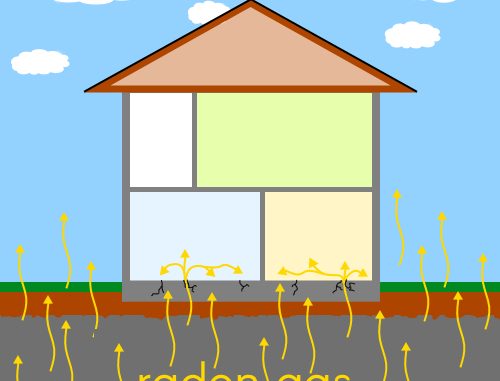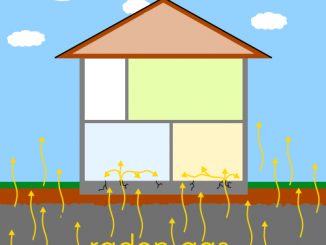
Radon, a Radioactive Gas and the 2nd Leading Cause of Lung Cancer, is Detected at High Levels in More Than 20% of Massachusetts Homes
During Radon Action Month in January, the American Lung Association urges everyone to test for radon
January is National Radon Action Month, an annual observance that focuses on increasing the public’s awareness of the health risk from radon, which is the second leading cause of lung cancer. During January and throughout the year, the American Lung Association is encouraging radon testing for everyone, including homeowners, renters, real estate agents, building managers and school administrators.
Radon is a naturally occurring radioactive gas emitted from the ground that is odorless, tasteless and colorless. It can enter a home through cracks in walls, basement floors, foundations and other openings. Radon can be present at high levels inside homes, schools and other buildings. Radon gas is measured in picocuries per liter (pCi/L) of air. The EPA recommends taking action to reduce radon if the result is 4.0 pCi/L or greater aiming to get your radon level to the lowest level possible.
According to the Lung Association’s State of Lung Cancer Report, an estimated 21.8% of Massachusetts radon test results equal or exceed the EPA Action level of 4 pCi/L. The average percentage of homes in states across the nation is also 21.8%.
“Radon in homes is more common than you think. In fact, at least 1 in 15 homes in the U.S. have elevated levels of radon and this is something that shouldn’t be taken lightly. Exposure to radon is the second leading cause of lung cancer in the United States,” said Albert Rizzo, M.D., chief medical officer for the American Lung Association. “The good news is that it is easy to test for radon. Do-it-yourself test kits are simple to use and inexpensive.”
Here are 5 important things to know about radon:
- Radon-related lung cancers are responsible for an estimated 21,000 deaths annually in the United States.
- Smoking and radon exposure can separately increase the risk of lung cancer. If you smoke, exposure to both tobacco and radon enhances the risk of lung cancer even further
- The only way to detect radon in your home is to test the air. EPA urges anyone with radon levels above 4 picoCuries per liter (pCi/L) take action to fix their homes. Both the EPA and the American Lung Association recommend that mitigation be considered if levels are greater than 2 pCi/L. After high levels are detected, a radon mitigation system should be installed by a radon professional.
- Radon testing should always be done when you buy a home and after building a new home. Many states now require radon results (if known) to be disclosed during a real estate transaction. Some states require testing in priority buildings like schools and daycares.
- When high levels of radon are detected, professional radon mitigation should be a priority. Do-it-yourself radon mitigation is typically not an effective long-term solution. Some state health departments offer financial assistance or low interest loans for radon mitigation.
Learn more about radon testing and mitigation at www.Lung.org/Radon.
About the American Lung Association
The American Lung Association is the leading organization working to save lives by improving lung health and preventing lung disease through education, advocacy and research. The work of the American Lung Association is focused on four strategic imperatives: to defeat lung cancer; to champion clean air for all; to improve the quality of life for those with lung disease and their families; and to create a tobacco-free future. For more information about the American Lung Association, a holder of the coveted 4-star rating from Charity Navigator and a Gold-Level GuideStar Member, or to support the work it does, call 1-800-LUNGUSA (1-800-586-4872) or visit: Lung.org.
El radón, un gas radiactivo y la segunda causa principal de cáncer de pulmón, se detecta en niveles altos en más del 20 % de los hogares de Massachusetts.



Be the first to comment